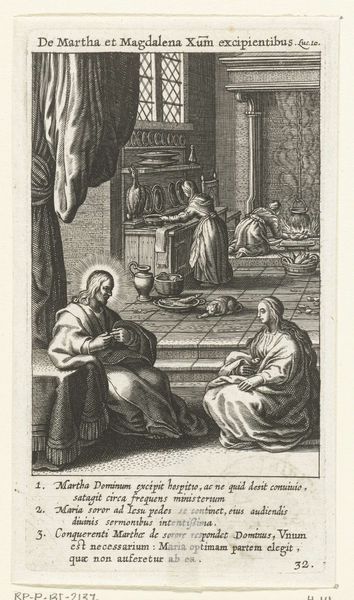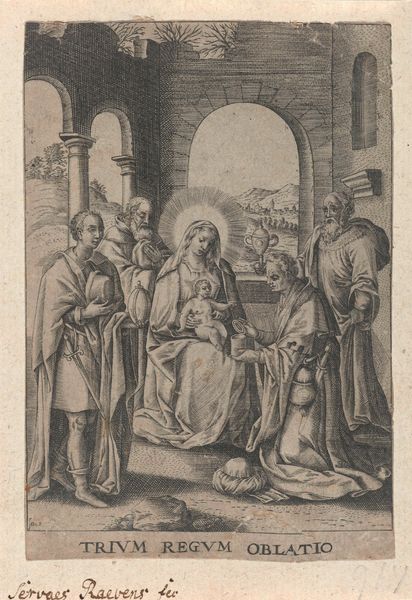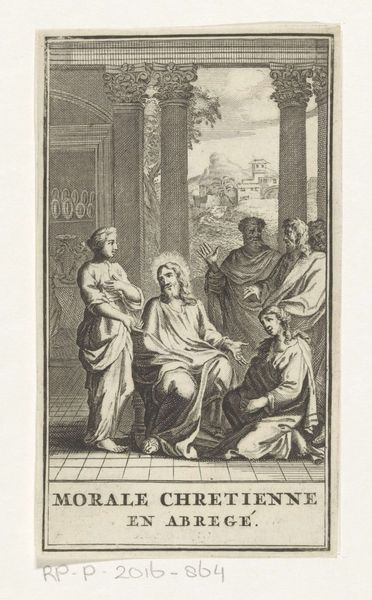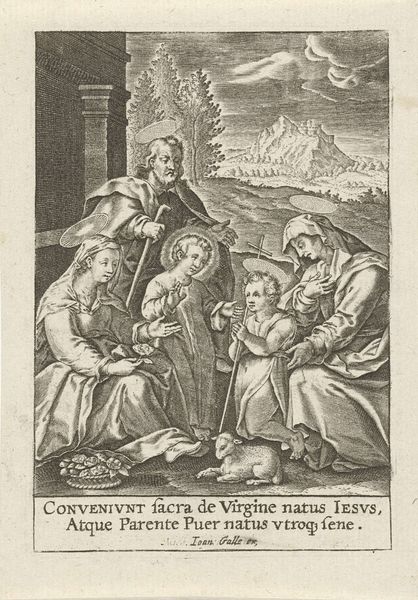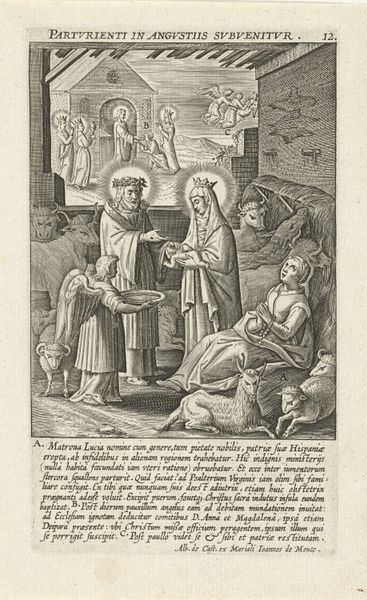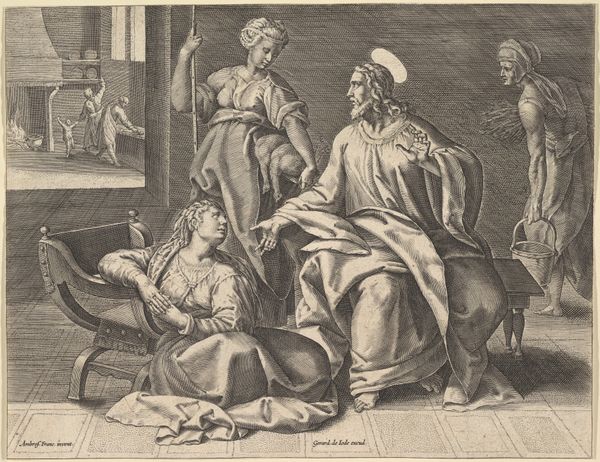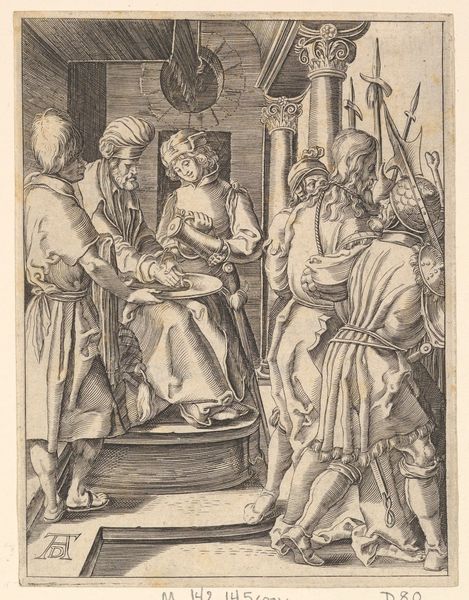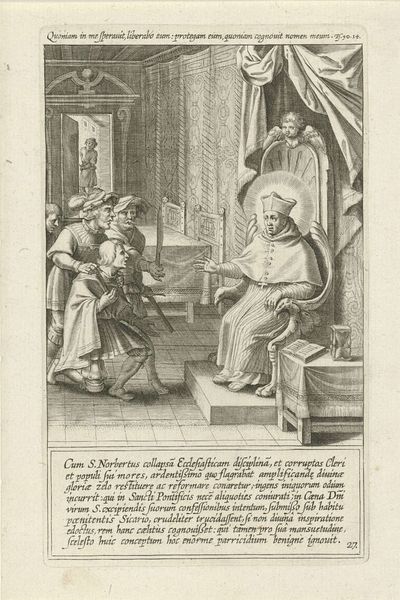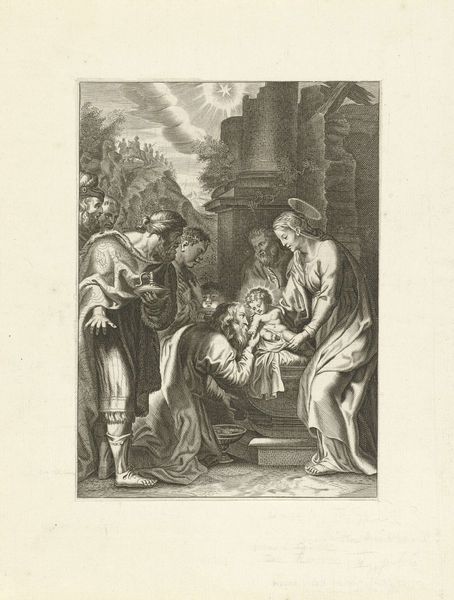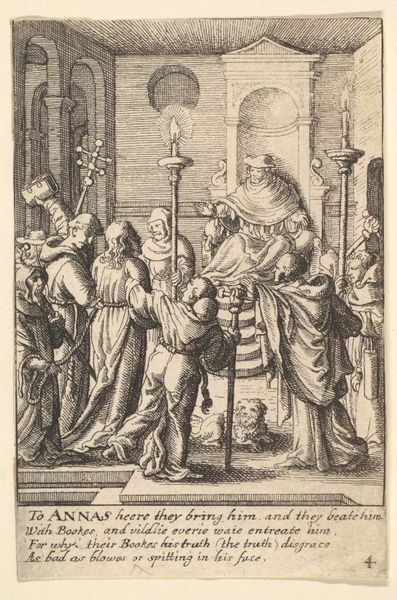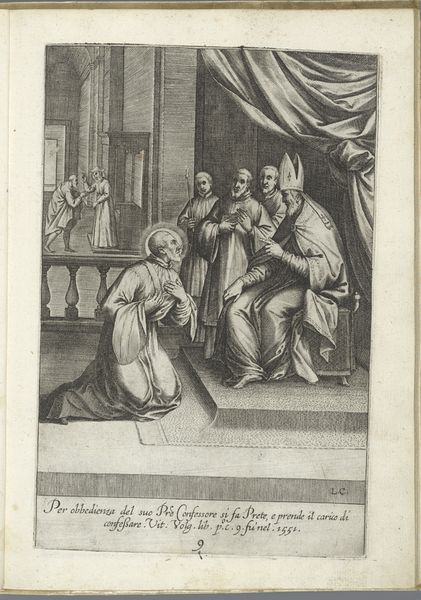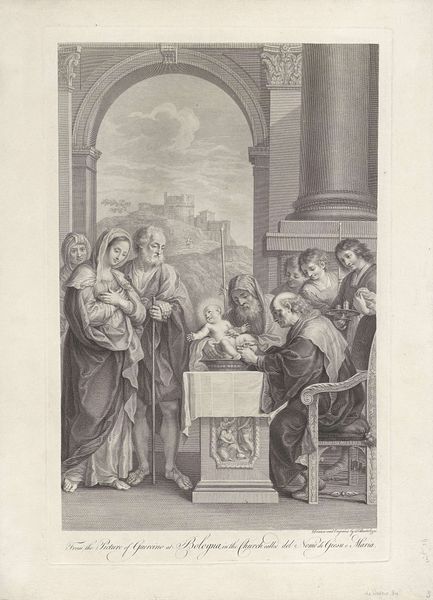
engraving
#
baroque
#
figuration
#
history-painting
#
engraving
Dimensions: height 199 mm, width 243 mm
Copyright: Rijks Museum: Open Domain
Curator: This is an engraving entitled "Tobit en Anna met de geit," likely created sometime between 1556 and 1633. It currently resides in the Rijksmuseum. Editor: My initial impression is one of somber domesticity. The stark black and white rendering emphasizes the subjects' rough garments, hinting at hardship. The angular forms and somewhat stiff poses reinforce this serious mood. Curator: Indeed, the composition adheres to certain conventions. Notice how the central figure of Anna is placed almost as a mediating force between Tobit and the heavenly figure, creating a clear visual narrative of faith and earthly existence. The artist skillfully employs line weight to create depth and highlight the primary figures, drawing the eye directly to their interaction. Editor: The lines are intricate, and given the date, they most likely used etching to build this piece up. If we look closely at the animal being presented, what’s immediately striking is the rough, unrefined carving to create texture in the goat's coat and the almost rudimentary rendering of Anna's dress folds, seemingly prioritizing function over aesthetics. It really focuses my mind on what they are going through, not on the way things look. Curator: The symbolic nature of the goat must also be taken into account. It represents material sustenance, and here Anna provides for her family, emphasizing a theme of devotion but also, as a religious artwork, faith in providing through charity. What it produces, is therefore part of how we ought to think about how society as a whole exists, bound together through generosity, represented through the figure of Anna and the materiality of the goat as well as its provision. Editor: Thinking about that labor of engraving as you mentioned earlier, labor is embedded throughout the object and within it—not simply representational—from the raising of livestock and the tending of fiber that results in clothes and livestock being given and the work that happens because of Anna giving it. And we could even argue that if one knows this artist, the same idea can be projected of them and what their daily labor as an artisan can do, their charitable contribution. Curator: A fitting assessment. It underscores how the artwork's aesthetic presentation serves its overarching theme. Editor: Agreed, and I find it compelling to think of all of these themes when considering it's status as "art."
Comments
No comments
Be the first to comment and join the conversation on the ultimate creative platform.
